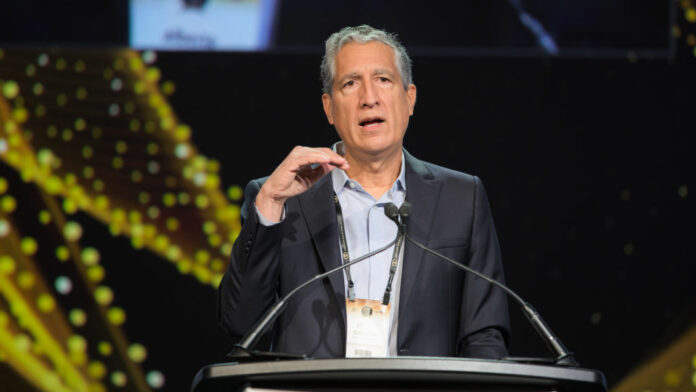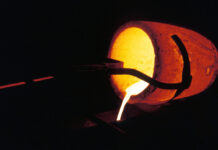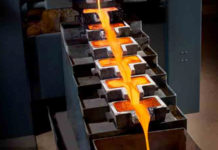
ANGLOGOLD Ashanti would consider additional shareholder returns if the gold price remained at current levels for the remainder of the financial year.
This was after a barnstorming performance in the first quarter in which the company increased free cash flow sevenfold owing to higher production and good control over cash costs, up only 4% year-on-year.
The spark in the performance, however, was the gold market. AngloGold collected a staggering $800 more per ounce in revenue than a year ago.
It is hardly alone in the bonanza – the VanEck Gold Miners ETF is 40% higher this year – but in the context of the group’s new dividend policy, which is to pay a base dividend and 50% of year-end free cash flow, the benefit for investors is significant.
AngloGold generated $403m in free cash flow in the period under review. Given that it declared a base first quarter dividend of $63m (12.5c/share), a further $137m is due in order to true up to the 50% free cash flow payout, or $201.5m for the quarter.
“If the gold price stays where it is, we’ll have to look at other ways of redistributing [cash],” said Alberto Calderon, CEO of AngloGold in a call to analysts on Friday. “So at this stage, it’s a discussion that we will have for the board … [to find] the appropriate mechanism to do that.”
In considering “other avenues” for paying shareholders, share buy-backs was a possible solution, he added. “Let us first implement the new dividend policy, then second quarter, then third quarter,” he said.
AngloGold benefited from the incorporation of Sukari, a mine in Egypt it bought with the $2.5bn takeover last year of Centamin. Production increased to 720,000 ounces compared to 591,000 oz in the first quarter of the 2024 financial year. Cash costs were $1,223/oz.
The outcome for first quarter earnings was a 671% increase year-on-year to $447m. Basic earnings were $443m, a 664% lift over 2024.
Shares in the company gained 4.3% taking 12-month gains to 83% and valuing AngloGold at R344.6bn in Johannesburg.
“With the operational momentum continuing and the reshaped portfolio, AngloGold is now in a good position to further close the valuation gap relative to its peers, in our view,” said Arnold van Graan, an analyst for Nedbank Securities.
Calderon said a decision to pause a proposed joint venture with Gold Fields in Ghana was not driven by the gold price improvement. In terms of the joint venture, first announced in March 2023, AngloGold’s Iduapriem mine was to be run as single operation with Tarkwa, a neighbouring mine owned by Gold Fields.
“We’ve done a lot of work at the whole company in the last years in understanding the horizons of the different assets … in five, 10, and 20 year window,” said Calderon of a strategy to see if tier two mines can be upgraded. In terms of this, it made sense to consider Iduapriem’s potential as a standalone mine, he said.
A similar study of Geita, AngloGold’s mine in Tanzania (already considered tier one however), indicated that it could continue operating well into the 2030s. “We’ve done that across the whole company,” said Calderon. Gold Fields insisted the “industrial logic” of combining the mines remained.
Ghana’s newly elected government, which was to own 10% of the JV, had not approved it at the time of AngloGold deciding to pause the arrangement.
As of the quarter end, AngloGold reduced adjusted net debt 60% to $525m from $1.3bn at the close of the first quarter last year.











